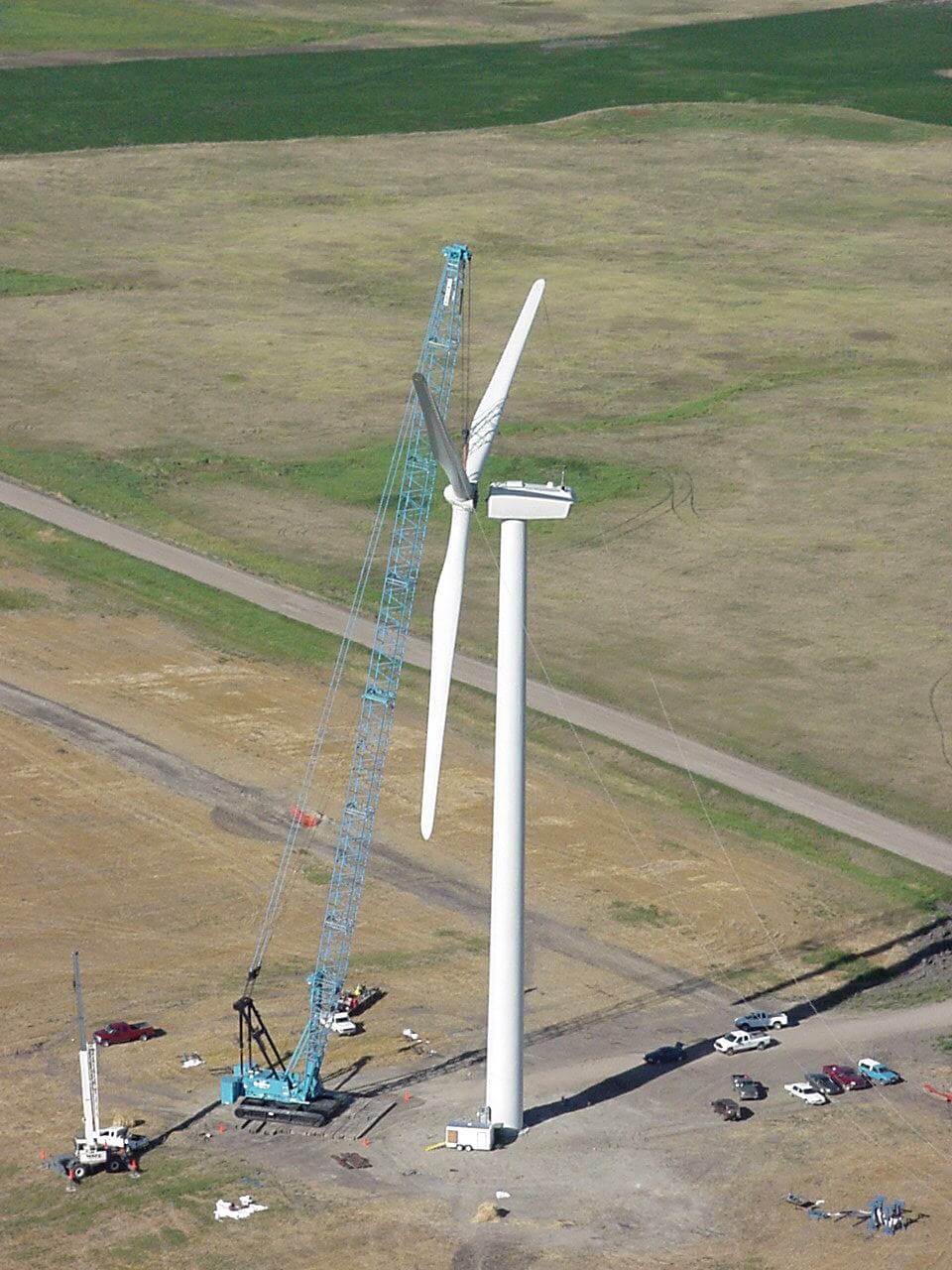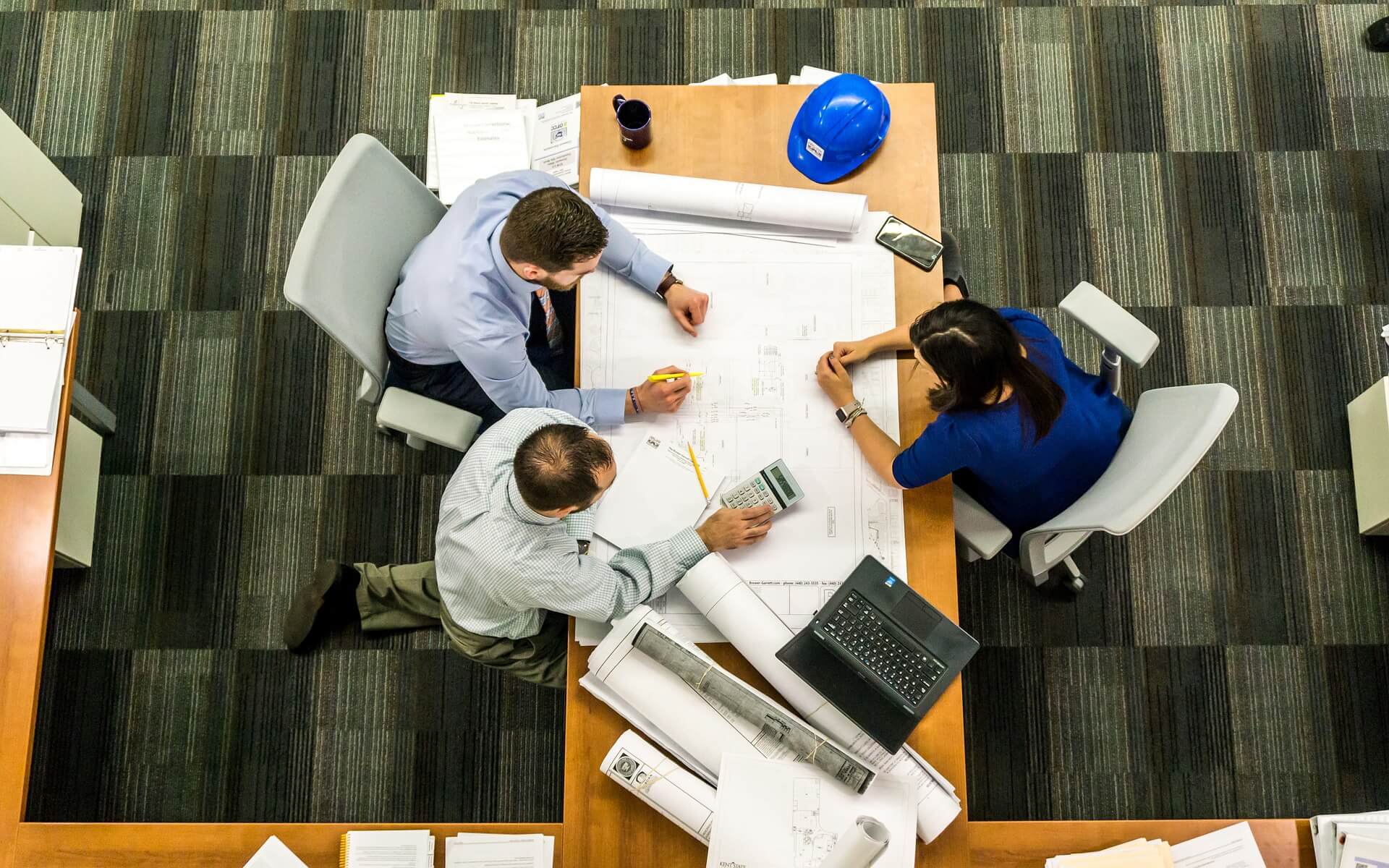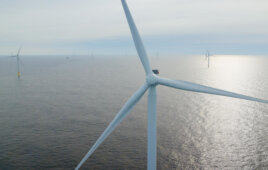By Jay Haley, PE, Principal in Charge of the Wind Energy
EAPC | www.eapc.net
Check out this and other articles in our Renewable Energy Guidebook, available here.

Build smart. When building a new wind farm, some of the most challenging issues occur in the early planning and construction stages. New developers should spend time on research and due diligence before committing to their first wind project. (Photo credit: Joy Powers)
So you’ve found an ideal location to build a wind farm and are considering life as a wind developer. How hard could it be, right? Before jumping into the industry with both feet, first consider the many phases and nuisances involved with moving a wind project forward. Wind development comes with unique and often subtle development challenges that can easily make or break a project.
A full understanding of those subtle industry differences can save time, cost, and potential pitfalls when developing a wind farm.
Development phases
Wind-farm development is a complex process. As a project progresses through the various stages of development, there are many opportunities for mistakes that can seriously affect the final outcome and success of a wind farm. In fact, some of the biggest mistakes in wind development begin in the early stages and are difficult to overcome as the project progresses.
The typical phases of wind-farm development are:
- Prospecting and land securing
- Wind-resource assessment
- Interconnection and transmission studies
- Wind-farm design and permitting
- Power purchase agreements
- Financing
- Procurement
- Construction and operations
Poor site selection is all too common with new developers. Sites are ill chosen for the wrong reasons, such as location preferences, or without sufficient due diligence.
Typical problems that arise from poor site selection include:
- Landowner issues,
- Less than adequate wind resource,
- Lack of access to transmission (or no capacity on existing lines),
- Lack of an off-taker for the power,
- Constructability issues, and
- Fatal permitting issues.
Data collection
Depending on the size of the project and the complexity of the terrain, a number of site measurements are necessary to validate wind flow. A financeable wind-measurement campaign includes proper selection of measurement locations and heights, a reliable measurement instrument, and an equipment maintenance plan. Also needed is a high degree of data recovery and thorough documentation.
Most investors and banks require a minimum of one year of onsite wind data before either will consider financing a project. Most turbine manufacturers have the same requirement.
An independent engineer is typically asked to verify the wind regime and energy projections prior to financial closing, so the wind measurement campaign must be thoroughly documented and the met towers precisely installed at a potential development site. Installation details such as tower location, mounting heights, boom directions, instrument models, serial numbers, calibration coefficients, and site photographs are all necessary for the independent engineer to perform his or her task accurately.

Know the opposition. Establishing strong local connections and community support for a wind project is often the best way to anticipate and avoid opposition that may threaten land leases, project permits, and wind-farm financing. Permitting bodies also tend to look more favorably upon projects that have strong local support and participation, so being proactive can successfully impact a new wind project.
Permitting standards
Permitting is an expensive part of a wind-power project, and requirements vary from state to state and from county to county. One missed step can quickly jeopardize or halt a project from moving forward. For example, regulations are often changing with regards to bats, eagles, migratory flyways, and endangered species or regions, so keep up with the latest rules and bylaws.
The size of wind turbines — which has gotten larger and taller of late — is also an important development consideration. Setbacks from occupied structures have increased due to noise and shadow flickering concerns, which may eliminate some of the developable area.
Turbine choices
As wind turbines get taller and blades longer, it is critical to measure wind speeds at hub height and within the vertical profile of the swept area of the blade. Failure to obtain accurate wind measurements could jeopardize the chances of getting turbines certified for a site. The type of measurement instrument selected is also important, and quality counts. Lower quality instruments can result in poor data and higher uncertainty in the wind regime. This, in turn, can lead to significantly higher financing costs, many times more than the amount saved on cheaper instrumentation.
The type of wind turbine selected is also crucial to achieving a successful and financially viable project. All turbines are not created equal. Some turbines match up with the wind resource better and, therefore, produce more electricity than the others. Some turbine types will have higher upfront costs, while others may have higher operations and maintenance costs. All such factors need consideration prior to selecting the best turbine model for the project.
Buyers wanted
If you intend to sell power to a local utility once the wind farm is up and running, it is a good idea to open up a dialog early on. It is also important to research the local infrastructure, proposed upgrades to transmission systems and substations, long range plans for large transmission projects, and the overall system operations for that region.
As more and more wind farms are built in an area, the possibility of being curtailed due to transmission congestion becomes more likely and will affect the financial viability of the project. The late stage of project development is a less than ideal time to learn there are no interested buyers for the output from the wind farm — and this does happen from time to time. The reason? There are several including political changes that affect the market, interconnection or transmission issues preventing access to the market, or unrealistic expectations regarding the anticipated power pricing.
It cannot be overstated: proper due diligence in the early stages of a wind project can help avoid costly mistakes and disappointment down the road.
Filed Under: News, Projects




